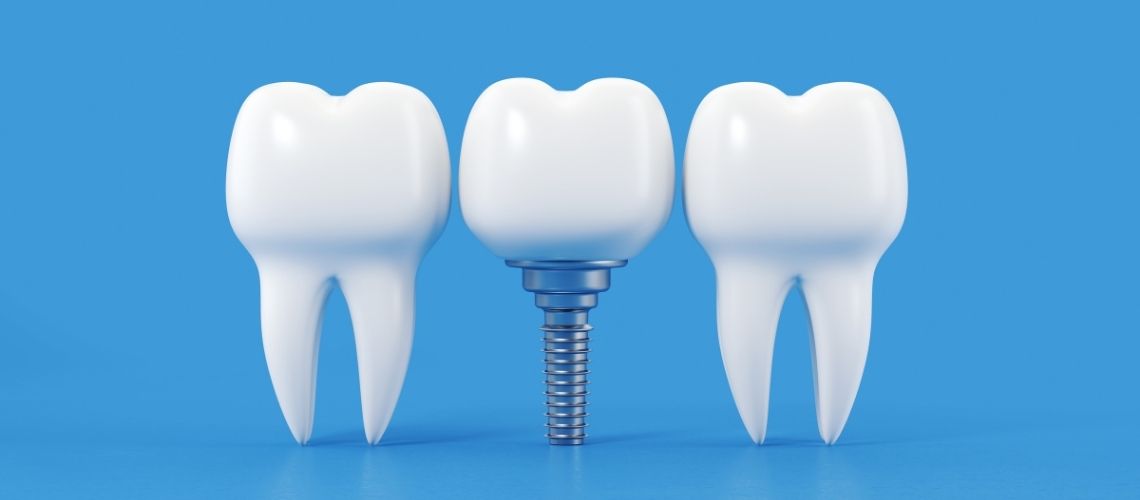**Periodontitis is a serious inflammatory disease that occurs in the gums and surrounding tissues. This condition usually arises as a result of bacterial infections. While the disease can lead to tooth loss, it is also associated with systemic conditions such as heart and vascular diseases. If untreated, it can cause permanent damage to both oral and general health.**
Periodontitis: A Threat to Gum and Dental Support
**Periodontitis is a serious disease resulting in the inflammation of the gums and surrounding tissues, leading to the loss of bone and gum tissue. It is primarily caused by bacterial infections and, if untreated, can result in tooth loss. This inflammatory process starts in the gums and gradually spreads to deeper tissues, affecting the bone structure.**
The causes of the disease include various factors:
- Bacterial biofilm formation
- Poor oral hygiene
- Genetic predisposition
**Additionally, environmental factors and lifestyle choices can increase the risk of periodontitis. For instance, irregular dental care and poor nutrition provide a breeding ground for bacterial plaque buildup, leading to gum inflammation. Habits like smoking can also make gums more prone to inflammation.**
**The effects of periodontitis are not limited to oral health. It also has negative impacts on general health; for example, it has been linked to heart disease and diabetes.**
Primary Causes of Periodontitis
**Plaque and tartar buildup on teeth are the main triggers of this disease. Poor oral hygiene leads to gum inflammation, which can progress to periodontal disease. Gingivitis begins rapidly with interrupted hygiene and can be reversed with regular care. Other factors accelerating the spread and severity of periodontal disease include:**
- Developmental pits,
- Inadequately performed restorations,
- Genetic predisposition,
- Smoking,
- High stress levels.
**Each of these factors plays a critical role in the development of periodontitis and must be considered in its management.**
Prevalence of Periodontitis
**Periodontitis is considered an advanced stage of gum disease and can appear in various forms. Chronic periodontitis is particularly associated with the accumulation of dental plaques and tartar and is mostly seen in adults. Meanwhile, aggressive periodontitis with familial characteristics typically progresses more rapidly in younger individuals. Apart from these two main types, there are two subtypes:**
Localized aggressive periodontitis (LAP)
- 2.6% in African Americans
- 1% to 5% in Africans
- 0.2% in Asians
- 0.5% to 1% in North Americans
- 0.3% to 2% in South Americans
Generalized aggressive periodontitis (GAP)
- Overall prevalence is 0.13%
- LAP is less than 1%
**These data show that periodontitis varies according to ethnicity and living area. Chronic periodontitis is more common in developing countries, while access to treatment is higher in developed countries.**
Developments During the Periodontitis Process
**Periodontitis begins with the formation of biofilms caused by bacterial infections. An acquired pellicle rapidly forms on the tooth surface, followed by the initial attachment of bacteria. Initially, gram-positive bacteria such as Streptococcus and Actinomyces predominate as the main colonizers of dental plaque. Adhesin receptors on the surfaces of these bacteria bind to the pellicle, laying the groundwork for subsequent accumulations.**
- Initial bacterial colonization: After pellicle formation, Streptococcus and Actinomyces species settle.
- Biofilm formation: Bacteria form a biofilm within a protective matrix, gaining resistance to antibiotics.
- Metabolic activities: Circulatory channels within the biofilm facilitate nutrient distribution and waste disposal.
**As a chronic process, the progression of periodontitis continues with the interaction of microbial complexes. Groups known as the red and orange complexes become prominent in more severe forms of the disease. The quorum sensing mechanism regulates the coordinated behavior and gene expression of bacteria. This process facilitates the spread of the disease and can damage gum tissue. Periodontitis sustains and develops its own microecosystem through the following mechanisms:**
- Changes in pH and metabolites: Altered conditions within the biofilm support the survival of different bacterial species.
- Anoxia formation: As dental plaque increases, oxygen levels decrease, allowing anaerobic bacteria to thrive.
**During this process, the innate immune system of the patient responds by sending neutrophils to the infected area. These cells increase inflammation, causing redness and swelling in the gums. The adaptive immune response involves the following mechanisms:**
- Increased release of mediators such as interleukin 1-beta and tumor necrosis factor.
- Activation of B and T lymphocytes provides more effective combat against infection.
**The consequences of periodontitis include the destruction of supporting tissue and bone. The activation of RANK plays a crucial role in this process, leading to the initiation of bone resorption by osteoclasts. This condition can progress to tooth loss.**
Tissue Analysis: Microscopic Stages of Periodontitis
**The development of periodontitis starts from the gingivitis stage and progresses through various histopathological changes at the microscopic level. The initial stage, known as the initial lesion, lays the foundation for gum inflammation. At this stage, minor ulcerations are observed in the sulcular epithelium. If untreated, this condition progresses to an early lesion.**
- Initial Lesion: Infiltration of inflammatory cells begins.
- Early Lesion: Collagen fibers within the lamina propria start to deteriorate.
- Established Lesion: Inflammation spreads from the epithelium to the connective tissue.
**As inflammation spreads to the connective tissue, the established lesion progresses to an advanced stage. During this process, collagen fibers are severely damaged. As a result, the attachment elements in the gum weaken, manifesting clinically as attachment loss. The activation of osteoclast cells initiates bone resorption. This bone destruction marks the beginning of the process leading to tooth loss. Each stage is crucial for the progression of periodontitis.**
Symptoms and Examination Methods
**Periodontitis manifests through various symptoms in both early and advanced stages. Initially, patients may notice redness and swelling in the gums, often accompanied by gum sensitivity and discomfort during eating. As the disease progresses, gum bleeding becomes more frequent and severe, particularly during tooth brushing or eating hard foods.**
**Gum recession is a clear indicator of periodontitis. As the gums recede and expose tooth roots, dental sensitivity occurs. Additionally, new gaps may form between the teeth, leading to the accumulation of food debris. As the disease progresses, the structures supporting the teeth weaken, causing teeth to loosen, which becomes particularly noticeable during chewing.**
**To diagnose periodontitis, a dentist performs a detailed oral examination, assessing gum health and the degree of gum recession. Gum attachment loss is typically measured using a periodontal probe, which determines the depth of the pocket between the gum and the tooth.**
- Periodontal pocket depths can range from 4 to 12 mm.
- Gum bleeding: Bleeding of the gums during brushing.
**Advanced radiographic techniques reveal the presence and extent of alveolar bone loss. These images also show the condition of the tooth roots and the health of surrounding tissues, providing a clearer understanding of the stage of periodontitis.**
Diagnostic Process and Methods
**The diagnosis of periodontitis is made through both clinical and radiographic examinations. First, a comprehensive clinical examination of the patient’s dental and gum health is conducted, evaluating signs of gum inflammation, plaque buildup, and abnormalities in tooth development. The clinical examination includes the following elements:**
- Developmental inconsistencies indicating plaque buildup on teeth.
- Bleeding during probing is considered a sign of inflammation.
- Measurement of periodontal pocket depths using manual or pressure-sensitive probes.
- Determination of furcation involvement.
- Assessment of gum recession and clinical attachment level.
**Following this examination, the extent and location of bone loss are evaluated using radiographic methods, which may include the following imaging techniques:**
- Intraoral periapical radiography
- Bitewing radiography
- Panoramic radiography
**These radiographs provide detailed information on the amount of bone loss and the condition of the tooth roots. In cases of aggressive periodontitis, radiographic examinations clearly reveal vertical bone loss and arch defects in the molar region.**
Treatment Approaches and Patient Management
**The main goal of periodontitis treatment is to improve gum health and preserve periodontal tissues. The treatment process is shaped by the severity of the disease and involves various methods. First, it is necessary to reduce local factors and bacterial load. Additionally, lifestyle changes by the patient are of great importance, with an emphasis on quitting smoking and tobacco use.**
**Some measures implemented during periodontal treatment include:**
- Scaling and root planing: Cleaning of tartar and plaques.
- Mouthwashes and special toothpaste: Reducing bacterial load and supporting oral hygiene.
- Local drug applications: Targeting microorganisms in infected areas.
Other Significant Periodontal Disease Conditions
**Periodontal disease has various forms, which can affect treatment approaches. Acute necrotizing ulcerative gingivitis, for instance, presents with severe pain and rapid tissue loss in the gums, increasing the risk of ulcers and infections. Gum or periodontal abscesses are characterized by sudden onset of pain and swelling in the gums.**
- Acute necrotizing ulcerative inflammation: Includes severe pain and gum tissue loss.
- Gum abscess: Sudden onset of pain and swelling in the gums.
**Endodontic-periodontal lesions arise from both pulp and periodontal problems. Lastly, refractory periodontitis consists of persistent cases that do not respond to standard treatments. Such conditions complicate disease management and often require more aggressive treatment methods.**
Prognosis and Variables of Periodontitis
**The course of periodontitis is determined by various factors. The position of the teeth in the jaw is of significant importance. For instance, mandibular canines generally carry a lower risk, while maxillary second molars carry the highest risk. Additionally, periodontal disorders observed in the teeth and the position of the tooth directly affect the prognosis of the disease.**
Some critical factors determining the progression of the disease include:
- Increased periodontal pocket depth
- Mobility of the teeth
- Observed bone loss
- Furcation involvement
- Malpositioned teeth
- Inadequate crown-root ratio
**The presence of these factors generally leads to a worsening prognosis. However, factors such as paying attention to oral hygiene and quitting smoking can contribute to an improvement in the condition. Additionally, a decrease in tooth mobility is considered a positive development. During the maintenance phase, teeth in bleeding areas carry three times the risk of attachment loss compared to those in non-bleeding areas.**
Possible Health Issues
**Periodontitis can lead to other serious health problems in the body. When untreated, the disease negatively affects not only oral health but also general health. Therefore, the diagnosis and effective management of the disease are crucial.**
The local and systemic effects caused by periodontitis include:
- Increased levels of C-reactive protein: This can increase the risk of heart disease.
- Type II diabetes: Periodontitis can complicate blood sugar control, negatively impacting diabetes management.
- Chronic obstructive pulmonary disease: Inflammation in oral health can harm the lungs.
- Low birth weight infants: In pregnant women, periodontitis can lead to prenatal complications and low birth weight infants.
**These complications are related to periodontitis triggering and maintaining inflammatory responses in the body. Early intervention in the early stages of the disease plays a critical role in preventing destructive effects.**
Preventive Measures and Patient Guidelines
**The prevention of periodontitis begins with effective oral hygiene practices. Regular brushing of teeth is a fundamental step in maintaining healthy gums. The Bass brushing technique is particularly effective in plaque control.**
**Additionally, the use of dental floss should be incorporated into the daily oral care routine. This is essential for removing plaque that accumulates between teeth. Patients should use dental floss after each meal.**
- Tooth brushing techniques: The Bass method is especially recommended.
- Interdental cleaning: The use of dental floss or interdental brushes is essential.
**Tobacco use can increase the severity of periodontal diseases. Therefore, quitting smoking is crucial for protecting gum health. The management of periodontal diseases should not be limited to treatment but should include a comprehensive care program with regular check-ups and reminders.**

Dentist Handan Nohutcuoğlu graduated from Ege University Faculty of Dentistry in 1987. He has gained experience in various fields by working in many dental polyclinics throughout his career, combining his knowledge and experience. He continues to work at Hollywood Dental at the moment.








